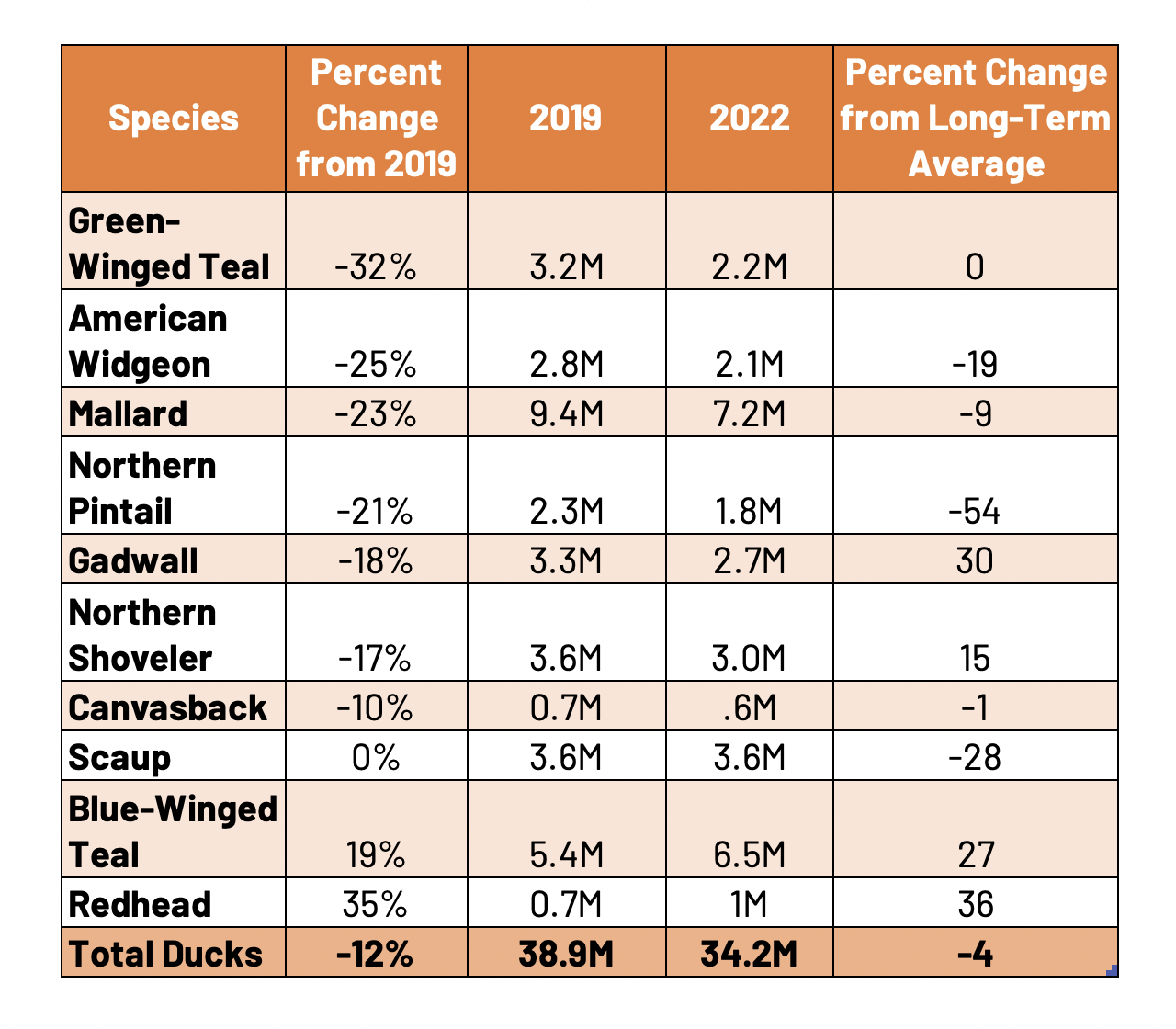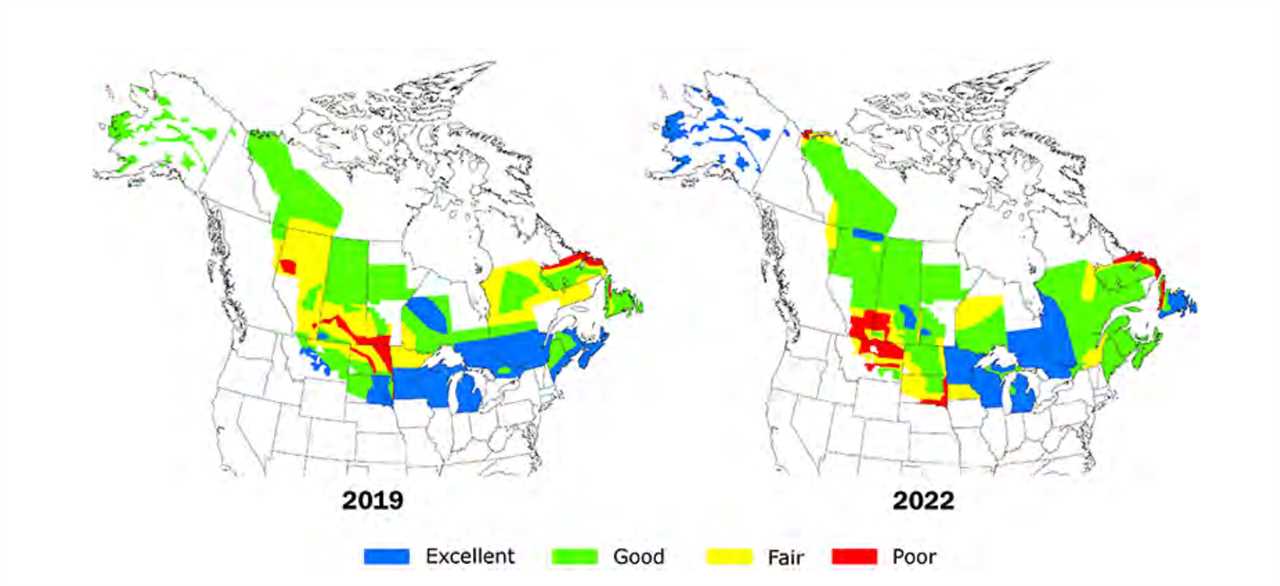||

Waterfowlers across the country have been waiting for the U.S. Fish and Wildlife Service to release its 2022 Waterfowl Population Status Report, but the results aren’t exactly encouraging. The overall population is only down 4 percent from the long-term average, but went down 12 percent since 2019.
The annual publication, now in its 67th year, lays out the continent’s estimated populations of 10 waterfowl species. This year’s duck count was also highly anticipated because it’s the first full duck count the USFWS has conducted since 2019. The onset of the pandemic in 2020 led to two straight years without a count due to travel restrictions in Canada, and duck hunters across the country have eagerly awaited this year’s results. The results are as follows:

Even though the results fall short of what biologists were hoping for, recent drought events make the numbers rather unsurprising. Seven of the 10 species are down in numbers since the 2019 count. Blue-winged teal and redheads both saw growth and the scaup population didn’t see any major changes.
“The total duck estimate in the Traditional Survey Area was the lowest in nearly 20 years,” Ducks Unlimited chief scientist Dr. Steve Adair said in a press release. “The drop in duck numbers reflects the consequences of low production caused by multiple years of prairie drought, including 2021, which was one of the most severe and widespread in nearly four decades.”
Quality habitat range went in the same direction as overall population count. Swaths of Montana, South Dakota, southern Alberta, and southern Saskatchewan transitioned from being considered “excellent,” “good,” and “fair” to “poor.”

Despite some of the dips in numbers, bright spots still shine through. According to the report, “duck numbers in the eastern Dakotas are…up 49% over the long-term average” and “in southern Manitoba, the total duck population estimate was 35% above the 2019 estimate and similar to the long-term average.” Habitats in parts of North Dakota and southern Manitoba saw improvements as well.
“This year’s survey revealed what many expected, lower breeding duck populations partly as result of the drought we’ve experienced the last few years,” Ducks Unlimited CEO Adam Putnam said. “While we never like to see these declines, we know that prairie drought can increase wetland productivity and sets the stage for waterfowl success when the water returns, much as it did this spring in parts of the prairie.”
The post The USFWS Just Released Its First Full Duck Count in Three Years, and It’s Not Great appeared first on Outdoor Life.
||-------------------------------------
By: Katie Hill
Title: The USFWS Just Released Its First Full Duck Count in Three Years, and It’s Not Great
Sourced From: www.outdoorlife.com/conservation/usfws-releases-annual-duck-count/
Published Date: Fri, 19 Aug 2022 22:41:57 +0000
Did you miss our previous article...
https://playeverysport.com/recreational-sports/the-best-womens-hunting-pants-of-2022
.png)





